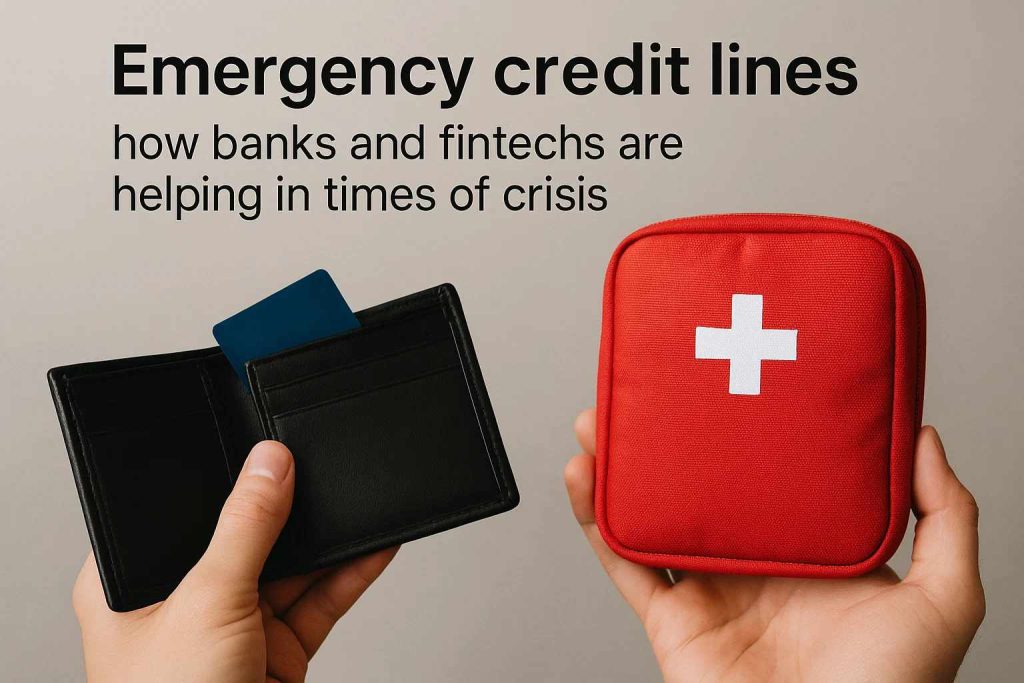In moments of sudden financial hardship, access to quick and reliable sources of credit can make the difference between resilience and collapse. For individuals and businesses alike, an emergency loan can serve as a lifeline, covering essential expenses and keeping operations afloat during turbulent times.
Banks and fintechs have taken a proactive role in offering emergency credit lines that are faster, more flexible, and more inclusive than traditional lending. From small entrepreneurs facing supply chain disruptions to families dealing with unexpected medical bills, these financial institutions are increasingly tailoring their services to meet urgent needs.
Traditional banks adapting to new realities

Banks, long considered the backbone of financial stability, have historically offered credit as part of their standard services. However, in times of crisis, such as recessions, pandemics, or natural disasters, they often face pressure to respond faster and with greater flexibility.
This shift marks a notable change in the conservative approach banks once maintained. By leveraging digital tools, streamlining bureaucratic procedures, and forming partnerships with government programs, they can now release funds more rapidly.
Fintechs leading the charge in accessibility
While banks are adapting, fintech companies have become the true pioneers of accessible emergency credit. Their digital-first approach allows for seamless applications, quick approvals, and faster disbursement of funds.
The role of fintechs goes beyond convenience; it represents a shift toward financial inclusion. By offering microcredit and small emergency loans, they cater to underserved populations, such as freelancers, gig economy workers, and small family-owned businesses. Companies like Nubank have gained visibility by providing low-friction credit solutions, proving that technology-driven finance can fill critical gaps during economic downturns.
Government-backed initiatives supporting emergency credit
In addition to banks and fintechs, governments often step in to create or support emergency credit programs. These initiatives are crucial in stabilizing economies during crises, as they reduce the risk for lenders and ensure broader access for borrowers.
Collaboration between governments, banks, and fintechs results in stronger and more efficient safety nets. For instance, during public health emergencies, credit lines are often extended to small businesses with partial or full government backing, making it possible for them to retain employees and cover operational costs.
The psychological impact of financial safety nets
Beyond the practical aspects of credit, the existence of emergency lines plays an important psychological role. Knowing that credit is available if needed gives individuals and businesses a sense of security, reducing anxiety and panic-driven decisions. This confidence helps stabilize markets, as consumers feel more comfortable spending and businesses are more likely to invest in survival strategies rather than shutting down prematurely.
In crises, uncertainty often exacerbates financial difficulties. Emergency credit lines act as a buffer against this unpredictability, allowing people to plan with a measure of assurance. By minimizing the psychological toll, these financial instruments contribute indirectly to economic recovery and resilience.
The future of emergency credit solutions
Looking ahead, emergency credit solutions are expected to become more integrated into everyday financial planning. Advances in artificial intelligence, predictive analytics, and real-time data monitoring will enable both banks and fintechs to anticipate crises and offer proactive credit options. Instead of waiting for a disaster to strike, financial institutions could pre-approve credit lines for customers deemed at risk, ensuring funds are ready when needed.
Furthermore, as global crises such as climate change and pandemics continue to shape economic landscapes, demand for flexible, rapid-response financial tools will only increase. The collaboration between traditional banks, fintech innovators, and governments suggests a future where emergency credit is not just a reactive tool, but a proactive pillar of financial security.



